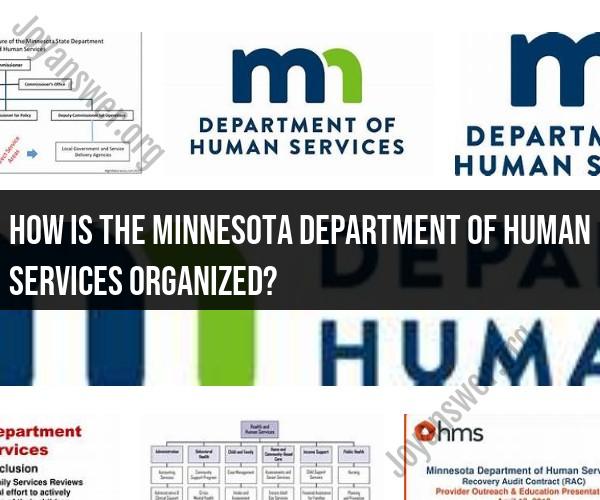How is the Minnesota Department of Human Services organized?
The Minnesota Department of Human Services (DHS) is a state agency responsible for providing a wide range of services and programs to support the well-being and quality of life for residents of Minnesota. Let's explore the structure and organization of the Minnesota DHS:
1. Commissioner's Office
The Commissioner's Office is at the top of the organizational hierarchy and is led by the Commissioner of Human Services. The Commissioner oversees the entire department and sets the strategic direction for its programs and initiatives.
2. Divisions
The Minnesota DHS is organized into various divisions, each focusing on specific areas of service:
- Health Care Administration (HCA): This division oversees healthcare programs, including Medical Assistance (Medicaid) and MinnesotaCare.
- Children and Family Services Division (CFSD): CFSD provides services related to child protection, foster care, adoption, and child welfare.
- Disability Services Division (DSD): DSD supports individuals with disabilities through programs and services that promote independence and community integration.
- Economic and Employment Services Division (EESD): EESD administers programs such as SNAP (Supplemental Nutrition Assistance Program) and cash assistance.
- Behavioral Health Division (BHD): BHD focuses on mental health and substance abuse services, including treatment and prevention programs.
- Central Office: The Central Office provides administrative support, strategic planning, and coordination across divisions.
3. Regional Offices
Minnesota DHS has regional offices across the state that provide localized services and support. These offices work closely with local communities, organizations, and partners to deliver programs and resources.
4. Partnerships and Collaboration
The Minnesota DHS collaborates with various stakeholders, including county agencies, nonprofit organizations, healthcare providers, advocacy groups, and community-based organizations. These partnerships help ensure the effective delivery of services and programs.
5. Programs and Services
The department offers a wide range of programs and services, including healthcare coverage, financial assistance, child protection, disability services, mental health support, and more. These services are designed to address the diverse needs of Minnesota residents.
Conclusion
The Minnesota Department of Human Services is a vital agency that provides essential services to enhance the well-being of Minnesota residents. Its organized structure, divisions, regional offices, and collaborative approach ensure the delivery of effective and impactful programs that contribute to the health and welfare of individuals and communities.


